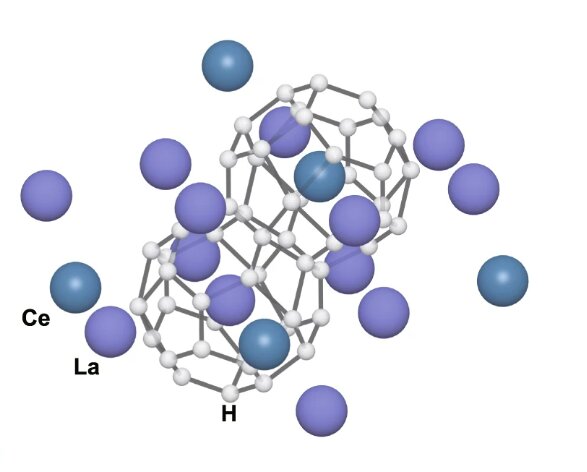

Scientists from Jilin University, the Center for High Pressure Science and Technology Advanced Research, and Skoltech have developed a new material that could be a significant step toward the creation of a material that conducts electricity with zero resistance at near-room temperature and atmospheric pressure. Researchers are currently exploring polyhydrides, which are compounds with extremely high hydrogen content, as a potential solution. One current champion for high-temperature superconductivity is a lanthanum polyhydride that requires the pressure of 1.5 million atmospheres. Cuprates, on the other hand, are a class of materials that superconduct under normal atmospheric pressure but require cooler temperatures.
The scientists from Skoltech and Jilin University have now managed to loosen up the pressure requirements of polyhydride superconductors. They did this by tweaking the lanthanum-hydrogen system by adding some cerium into the mix, which created a lanthanum-cerium alloy. They then heated this alloy in a high-pressure cell with ammonia borane, a substance that releases a lot of hydrogen as it decomposes.
The new material, lanthanum-cerium polyhydride, offers a compromise between the polyhydrides of lanthanum and cerium in terms of how much cooling and pressure it requires. Compared with the 1.5 million atmospheres needed for LaH10, this new material is stable at just 1 million atmospheres and works at -97°C. While polyhydrides in general will hardly ever be made to superconduct at atmospheric pressure, this study’s insights into superconductivity bring us closer to attaining that ultimate goal with other materials.
The new material is also interesting for two key experiments. Firstly, it shows the possible anisotropy of the upper critical field for hydrides, which is the dependence of critical temperature on the direction of the magnetic field. Secondly, it shows that with a decrease in pressure, a pseudogap phase manifests in polyhydrides, and this is characteristic of cuprate superconductors.
The researchers suggest that hydrides and borohydrides of calcium, yttrium, lanthanum, and magnesium seem to deserve research attention at this point. The work is a reassurance that reasoning is right and affords insights into superconductivity, taking us closer to discovering and improving superconductors in a reliable and systematic way.
As humanity grapples with the looming urgency of climate change, a fascinating solution may lie…
As the imperative to achieve net-zero carbon emissions grows stronger, the complexities facing power grid…
Dark matter has become one of the most tantalizing puzzles of modern astrophysics, with its…
Recent groundbreaking studies led by scientists from the Scripps Institution of Oceanography at UC San…
At first glance, the cosmos appears to be a structurally sound bastion of stability, having…
A groundbreaking study spearheaded by researchers at the University of Copenhagen has illuminated the profound…
This website uses cookies.